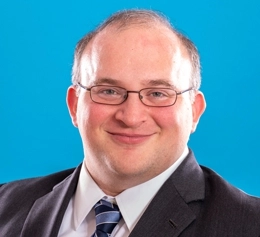In a renewed effort to challenge the so-called NHK-Fintiv rule, earlier this month Apple, Cisco, Google, and Intel asked the Federal Circuit to strike down the widely-criticized Fintiv doctrine for being instituted without a formal rulemaking procedure. This latest appeal demonstrates the continued controversy surrounding Fintiv, which has faced strong resistance from American companies since it first went into effect in 2020.
Under former USPTOUnited States Patent and Trademark Office. See also PTO. Director Andrei Iancu, the PTABPatent Trial and Appeal Board. Reviews adverse decisions of examiners on written appeals of applicants and appeals of reexaminations, and conducts inter partes reviews and post-grant reviews. The Board also continues to decide patent interferences, as it was known as the Board of Patent Appeals and Interferences (BPAI) before the AIA. established Fintiv, a mechanism for deciding whether to institute an inter partes reviewAn adversarial procedure created by the AIA for challenging patents. Intended to be similar to a court proceeding, the parties argue before an Administrative Patent Judge, not a patent examiner. The challenger must show a reasonable likelihood of successfully invalidating one claim before the PTAB will agree to grant a petition for review. (IPRIntellectual Property Rights. Usually associated with formal legal rights such as patent, trademark, and copyright. Intellectual property is a broader term that encompasses knowledge, information, and data considered proprietary whether or not it is formally protected.) of a patent’s validity when there is already parallel litigation in process. Specifically, the rule established a six-factor test for the PTABPatent Trial and Appeal Board. Reviews adverse decisions of examiners on written appeals of applicants and appeals of reexaminations, and conducts inter partes reviews and post-grant reviews. The Board also continues to decide patent interferences, as it was known as the Board of Patent Appeals and Interferences (BPAI) before the AIA. to apply discretionary denials for cases already being litigated in civil courtrooms nationwide.
In the time since, critics from across the business and policy landscape have challenged Fintiv on two counts: first, it bypasses the formal rulemaking process by which agencies must abide, and second, it undermines the very essence of the America Invents Act (AIAAmerica Invents Act of 2011. AIA made modest reforms, most notably moving the U.S. to a first-inventor-to-file system more aligned with foreign practice, but also including expanding prior user rights to all patent-eligible subject matter, and instituting a post-grant review proceeding.).
U.S. law has clear guidelines in place for agency rulemaking, including rulemaking by the USPTOUnited States Patent and Trademark Office. See also PTO.. First, the agency must issue a Notice of Proposed Rulemaking explaining the reasoning behind its proposal, allowing ample time for the public to submit its input. Once the comment period closes, the USPTOUnited States Patent and Trademark Office. See also PTO. considers the public’s feedback and determines whether or not it should adopt the proposed rule. This process is fair, democratic, and mandated by law. However, Fintiv was not subject to this process. Instead, it was unilaterally established and enacted without public input.
Fintiv also undercuts the intention of the AIAAmerica Invents Act of 2011. AIA made modest reforms, most notably moving the U.S. to a first-inventor-to-file system more aligned with foreign practice, but also including expanding prior user rights to all patent-eligible subject matter, and instituting a post-grant review proceeding.. The AIAAmerica Invents Act of 2011. AIA made modest reforms, most notably moving the U.S. to a first-inventor-to-file system more aligned with foreign practice, but also including expanding prior user rights to all patent-eligible subject matter, and instituting a post-grant review proceeding., enacted in 2011 as the most significant patent statute in over 50 years, established the IPRIntellectual Property Rights. Usually associated with formal legal rights such as patent, trademark, and copyright. Intellectual property is a broader term that encompasses knowledge, information, and data considered proprietary whether or not it is formally protected. process to streamline patent validity issues through the newly-created PTABPatent Trial and Appeal Board. Reviews adverse decisions of examiners on written appeals of applicants and appeals of reexaminations, and conducts inter partes reviews and post-grant reviews. The Board also continues to decide patent interferences, as it was known as the Board of Patent Appeals and Interferences (BPAI) before the AIA.. The PTABPatent Trial and Appeal Board. Reviews adverse decisions of examiners on written appeals of applicants and appeals of reexaminations, and conducts inter partes reviews and post-grant reviews. The Board also continues to decide patent interferences, as it was known as the Board of Patent Appeals and Interferences (BPAI) before the AIA. offers a low-cost alternative to civil litigation which is adjudicated by a slate of experts. By allowing the USPTOUnited States Patent and Trademark Office. See also PTO. to deny IPRs at their discretion, Fintiv negates the explicit mandate of the AIAAmerica Invents Act of 2011. AIA made modest reforms, most notably moving the U.S. to a first-inventor-to-file system more aligned with foreign practice, but also including expanding prior user rights to all patent-eligible subject matter, and instituting a post-grant review proceeding., while enabling weak patents to go unquestioned and fueling frivolous litigation. What’s more, Fintiv is primarily useful for cases where the patents are likely at least partially invalid—if the petitioner couldn’t show a reasonable possibility of invalid claims, the USPTOUnited States Patent and Trademark Office. See also PTO. could simply deny the IPRIntellectual Property Rights. Usually associated with formal legal rights such as patent, trademark, and copyright. Intellectual property is a broader term that encompasses knowledge, information, and data considered proprietary whether or not it is formally protected. petition on the merits. Only if the patent is likely invalid does Fintiv come into play.
This renewed challenge comes after a decision in March from Northern District of California Judge Edward Davila, who dismissed a lawsuit brought by the same plaintiffs, declaring Fintiv a non-substantive “general statement of policy” exempt from notice-and-comment requirements.
Now, the tech firms are appealing that decision, arguing that Fintiv shares key features with other substantive rules, including its binding effect and impact on private interests. They assert that despite Judge Davila’s characterization of Fintiv as a mere decision-making framework, it has historically served as a decisive barrier to meritorious petitions. According to the tech firms, the USPTOUnited States Patent and Trademark Office. See also PTO. “has not identified a single case in which the board instituted IPRIntellectual Property Rights. Usually associated with formal legal rights such as patent, trademark, and copyright. Intellectual property is a broader term that encompasses knowledge, information, and data considered proprietary whether or not it is formally protected. even though the rule pointed toward denial.”
Fintiv’s Uncertain Future
This appeal may be complicated by the Supreme Court’s recent reversal of the Chevron doctrine. The landmark Loper Bright decision, issued in late June, curbed the power of federal agencies and limited courts’ deference to agency interpretation of statutes. As I discussed in Patent Progress last month, some experts, like Jonathan Stroud of Unified Patents LLC, believe “the path to challenging [Fintiv] is much more straightforward than it was” before Loper.
This is precisely because Fintiv has never been instituted through the standard rulemaking process which governs agency rulemaking. Indeed, in successive ANPRM and NPRM processes, the public has overwhelmingly rejected codifying Fintiv, indicating the clear resistance to its permanent establishment as agency rule.
The status of Fintiv is especially tenuous as we face an unknown contender for the position of USPTOUnited States Patent and Trademark Office. See also PTO. director this election year. With Vidal possibly stepping down, regardless of which administration enters power next January, her replacement could mean progress in the world of patent law or a return to a landscape cluttered with frivolous lawsuits that preserve weak patents and drive litigation costs up.
Fintiv’s Cost to Innovation
By denying companies access to the most efficient mechanism for adjudicating patent disputes, Fintiv diverts their attention away from what they do best: developing new, cutting-edge technologies that advance our economy and maintain the U.S.’s competitive edge on the global stage. Our manufacturers should be focused on research and development, not costly, drawn-out legal battles. As other countries continue to invest in technological development, maintaining our position as a global industry leader is more important now than ever.
Fortunately, with Apple, Cisco, Google, and Intel leading the fight against Fintiv amid a post-Chevron regulatory landscape, the future of Fintiv has perhaps never looked more uncertain than it does today. If their challenge is successful, companies that rely on a balanced patent system to protect their innovation processes and their innovations alike will face fewer barriers to challenging invalid patents, fostering a more competitive and fair market.
As the tech manufacturers continue their fight, it is important to bear in mind that they are not just challenging a rule, but pushing for an intellectual property system that rewards true innovation and operates under transparent, fair, and established guidelines. With stakes this high, the result of this latest legal battle could have consequences which last for years to come.

